Model OAS Handbook1
Congratulations on being a part of the Model Organization of American States!
Now entering its third decade, this UW-Parkside program is the oldest regional simulation in the United States. The ongoing success of the Model OAS rest to a great extent on the interest and enthusiasm of generations of high school students and their
faculty advisors.
TIPS
Here are some tips to help you gain the most from your participation in
this year's model
- Learn and practice the OAS Rules of Procedures
- Study your 'country' and become familiar with its strengths and problems
- Try to represent 'your' country's interests, rather than those you hold as a citizen of the United States
- Never support another delegation's proposals just because they are friends of yours
- Read the Agenda (the list of topics that will be addressed in committees)and become familiar with the issues that you will be discussing in your committee
- Become an active member of your committee
Also, please remember that in this simulation, you hold the diplomatic post of Ambassador. It is important to dress and behave in a manner that reflects that high rank.
ROLES AND RESPONSIBILITIES
Delegations
Each delegation is made up of at least five delegates, so that there is one delegate representing its country in the five committees of the General Assembly. No more than five alternates may accompany the delegation.
Head Delegate
The delegation and faculty advisor appoints the head delegate before the simulation.
DUTIES
- Spokesperson for the delegation present Head Delegate statement to the General Assembly
- Votes for the delegation during Plenary Sessions
- Distributes credentials on the first day of the simulation
- Represents country in the General Committee
President of the Model
The President is elected during the first Plenary Session. Candidates for this position are asked to send the Secretariat Staff a statement or resume outlining their qualifications for the position, by Monday prior to the simulation.
CANDIDATE REQUIREMENTS
- Participation in at least two political simulations
- Knowledge of Parliamentary procedure
- Public speaking skills
- Leadership skills gained through such activities:
- Prior experience in running meetings
- Working in student government
- Officer positions in clubs
- Serve as Chair of the General Committee
- Preside over Plenary Sessions
- Write a statement for the final report
COMMITTEE OFFICERS
At the beginning of the individual committee sessions an election will be held to select the officers for that year.
VICE-CHAIR
Elections for Vice-Chair are held in all committees, excluding the General Committee. Candidates are to be selected from the members of the committee. Candidates must be nominated by at least three other delegations, and each delegation may only support one candidate.
DUTIES
- Assist the Chair
- Assume the duties of the Chair at least by the second day
- Be able to make knowledgeable decisions concerning the agenda topics and Parliamentary procedures
RAPPORTEUR
A Rapporteur is elected in all committees. Candidates must be a member of the committee.
DUTIES
- Serve as the committee's liaison to the Secretariat Staff
- Record the speaker's lists
- Time speeches
- Record amendments to resolutions
- Assume the duties of Vice-Chair, if necessary
RESOLUTIONS
WHAT IS A RESOLUTION?
Resolutions are formal documents that address specific agenda topics. If passed they become policy statements of the OAS. A resolution begins as a proposal made by a delegate in a committee. The resolutions must be in a proper form, pertain to the agenda topic in the committee, and have the signatures of five other delegates in the committee. By signing, those delegates oblige themselves to vote in favor of the resolution unless the said amendment is amended. If the resolution is amended, they are no longer obligated to vote on it.
EXAMPLE RESOLUTION
The Reintegration of Cuba into the OAS
General Committee
Agenda Item 1
Presented by the Republic of Cuba and Mexico
THE GENERAL ASSEMBLY
PROMPTED by the resolution passed on January 21, 1962 that excluded Cuba from full participation in the proceedings of the Organization of American States, and
APPALLED by the continued denial of representation for 11,382,820 inhabitants of the Americas , and
KEEPING IN MIND the continued participation of Cuba and other communist countries in the United Nation as well as the continued diplomatic and economic relations between Cuba and other OAS countries, and
NOTING the presence of democratic elections within the Cuban government, and
DEEPLY CONFIDENT in the commitment of the member nations of the OAS to the democratic principle of equal representation, and
RECALLING that Cuba has suffered under an economic embargo since 1961, denying food and medical care to the citizens of Cuba , and
EMPHASIZING that in 2000, Cuban courts estimated that Cuba had suffered $121 billion in damages from the embargo:
STRONGLY URGES the OAS to allow Cuba to resume its status as a fully functioning and participating member state, and
PROPOSES the immediate reintegration of Cuba into the OAS with full recognition as a legitimate state and the reinstatement of all voting privileges and eligibility to hold positions in committee and in the General Secretariat, and
REMINDS the assembly that, as a member state, Cuba currently continues to be held accountable for its obligations under the OAS Charter, and
TRUSTS that the member nations will not permit the deprivation of Cuba 's right of representation to continue.
How is a resolution presented?
A draft resolution should reflect your country's positions and interests as determined by your research.
Resolutions are almost always amended during committee debate. You should be prepared to consider modifying your resolution, combining it with others, or withdrawing it entirely in order to reach a consensus on a particular topic. Please bring 36 copies of each prepared draft to the Model for distribution to delegates.
The proposed resolution is presented to the committee for discussion. In that discussion, delegates may object to some aspect of the proposal. The task of a committee is to work toward consensus and develop resolutions that can achieve sufficient support to be approved in the committee and submitted for General Assembly approval.
For the resolution to pass out of committee, it must receive a majority of the votes of the Member States. Sometimes, proposed resolutions are substantially similar. In such cases, the proponents of these resolutions may consider drafting a resolution that combines their common elements, and then submit the resolution as joint sponsors. Resolutions that pass out of committee will be brought to the entire General Assembly. Each committee will have 20 minutes to present all of its resolutions for either individual or block presentation.
Preparing Resolutions
Resolutions follow a pattern. It is expected that all delegations will observe the following outline in preparing their resolutions. All resolutions should be typed. A sample resolutions directly follows the explanations of the composite elements of a proper resolution.
HEADING
The heading should have the following items in the upper left-hand corner:
- Subject in bold
- The committee in which the resolution was proposed
- Topic of the resolution
- Delegation which is proposing the resolution
PREAMBLE
The preamble describes the problem, recalls past actions on it, and explains the rationale behind the action the draft resolutions proposes. Perambulatory clauses consist of declarative statements beginning with words or phrases.
|
Acknowledging |
Conscious Considering Convinced Distressed |
Keeping in mind
Noting |
Remembering Respecting Seeking Stressing Understanding Valuing |



